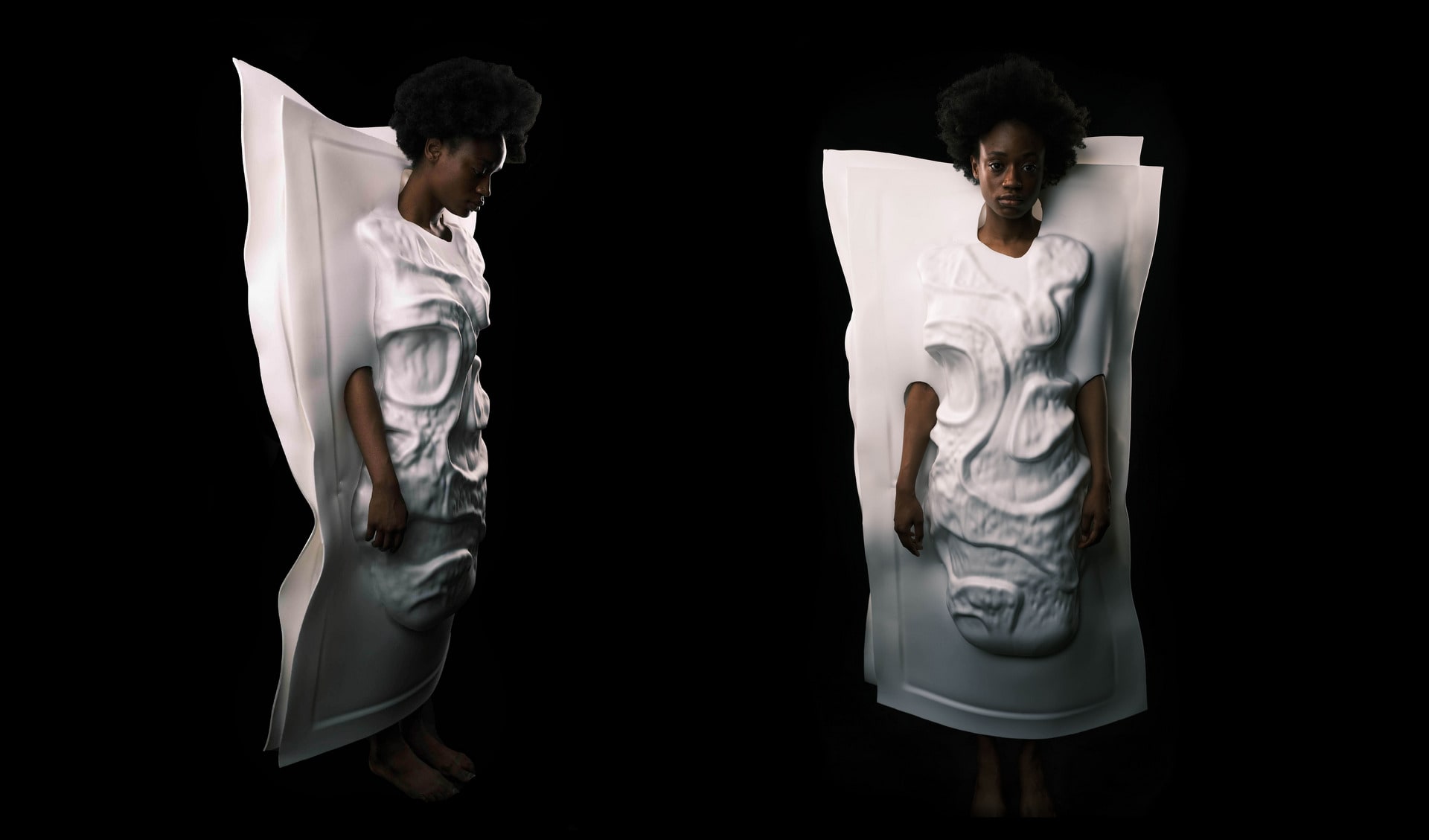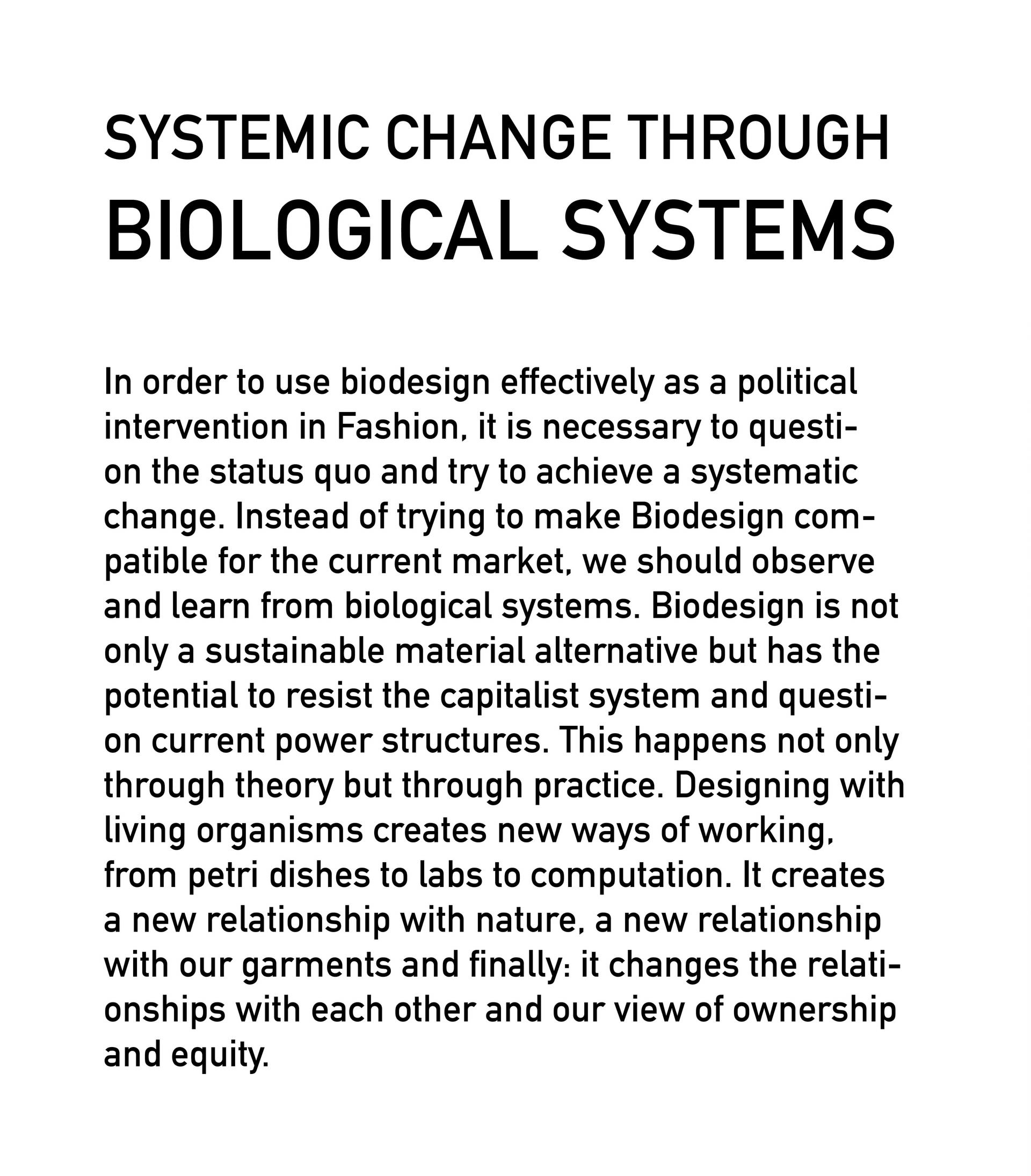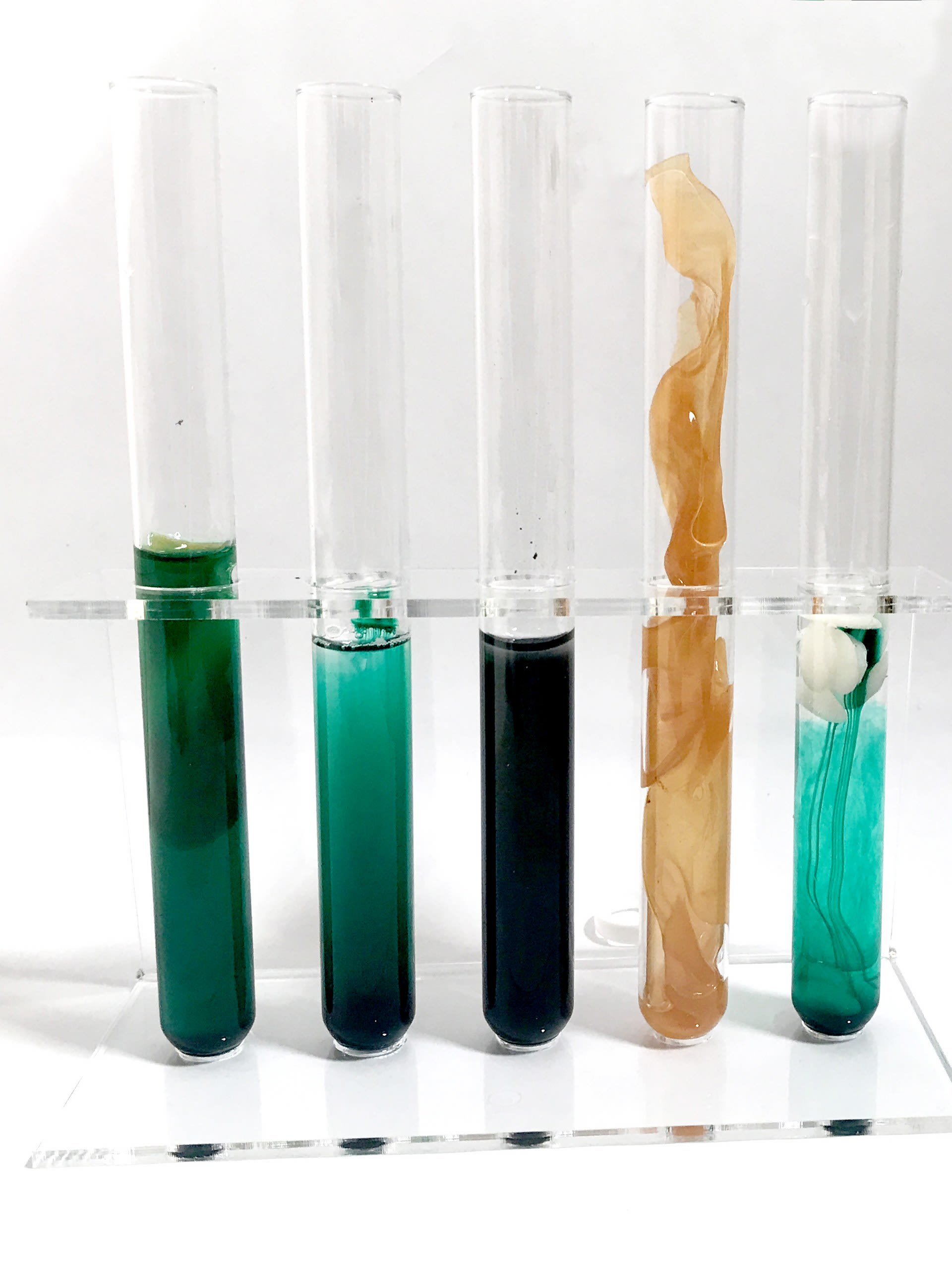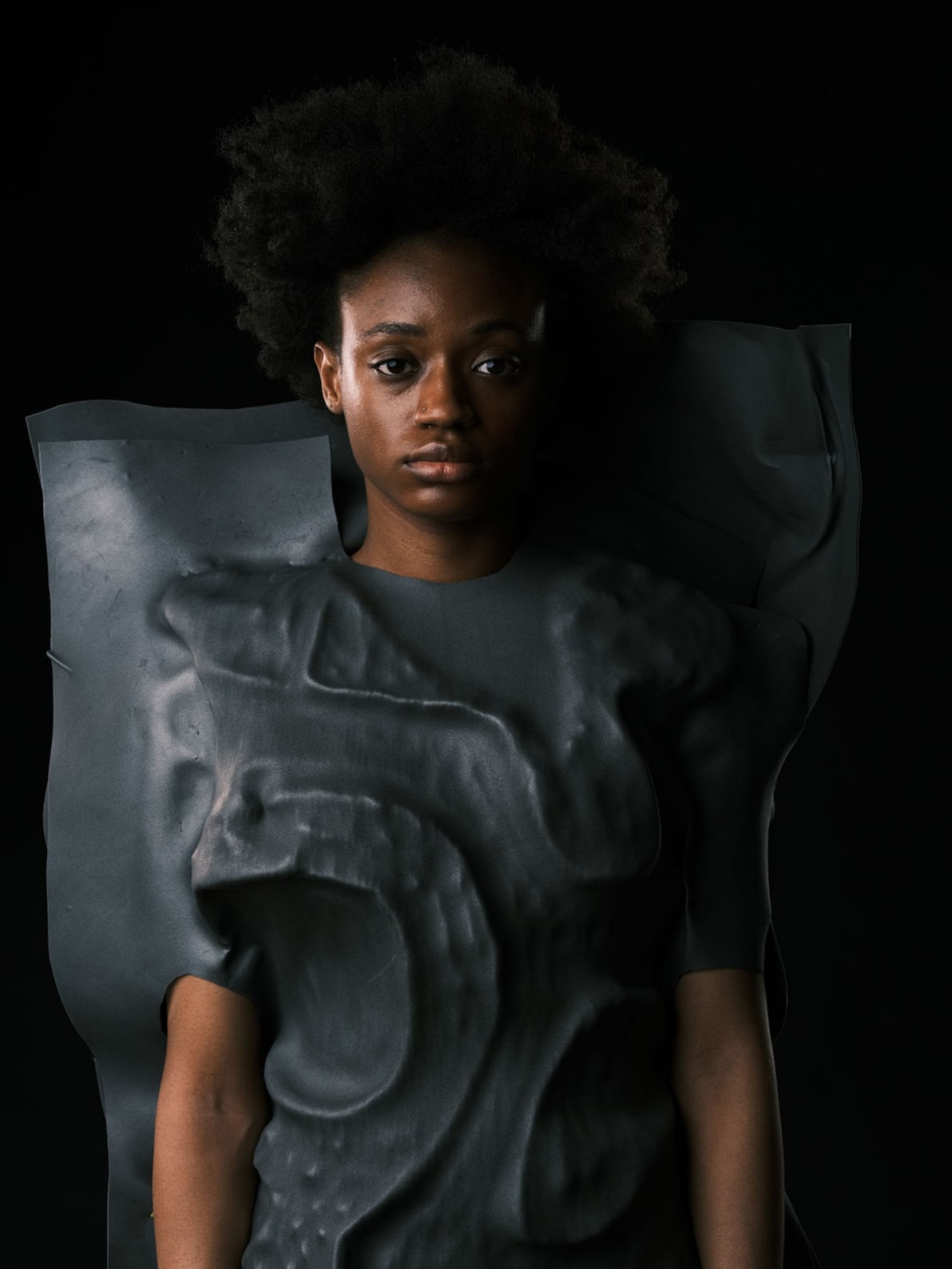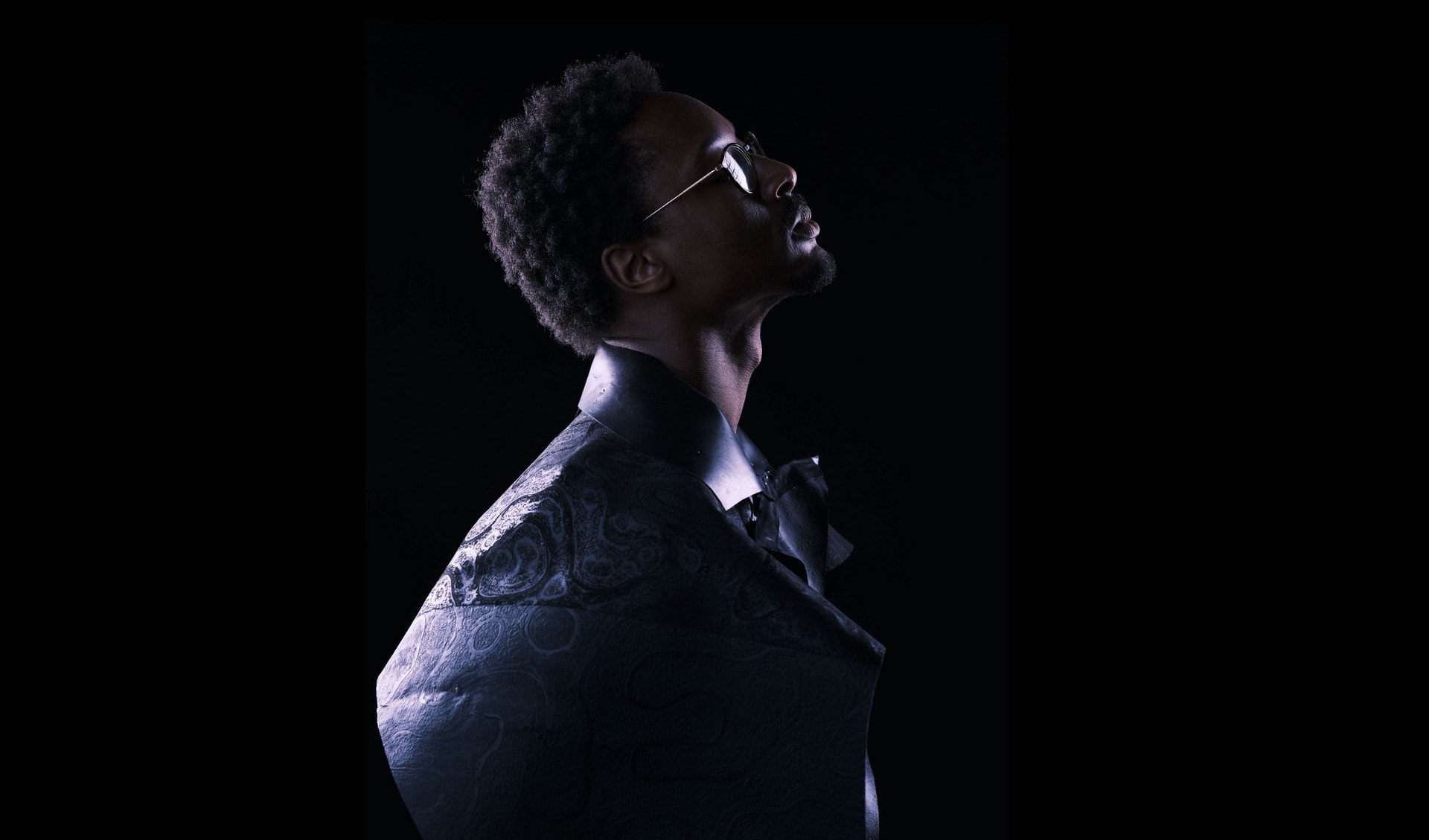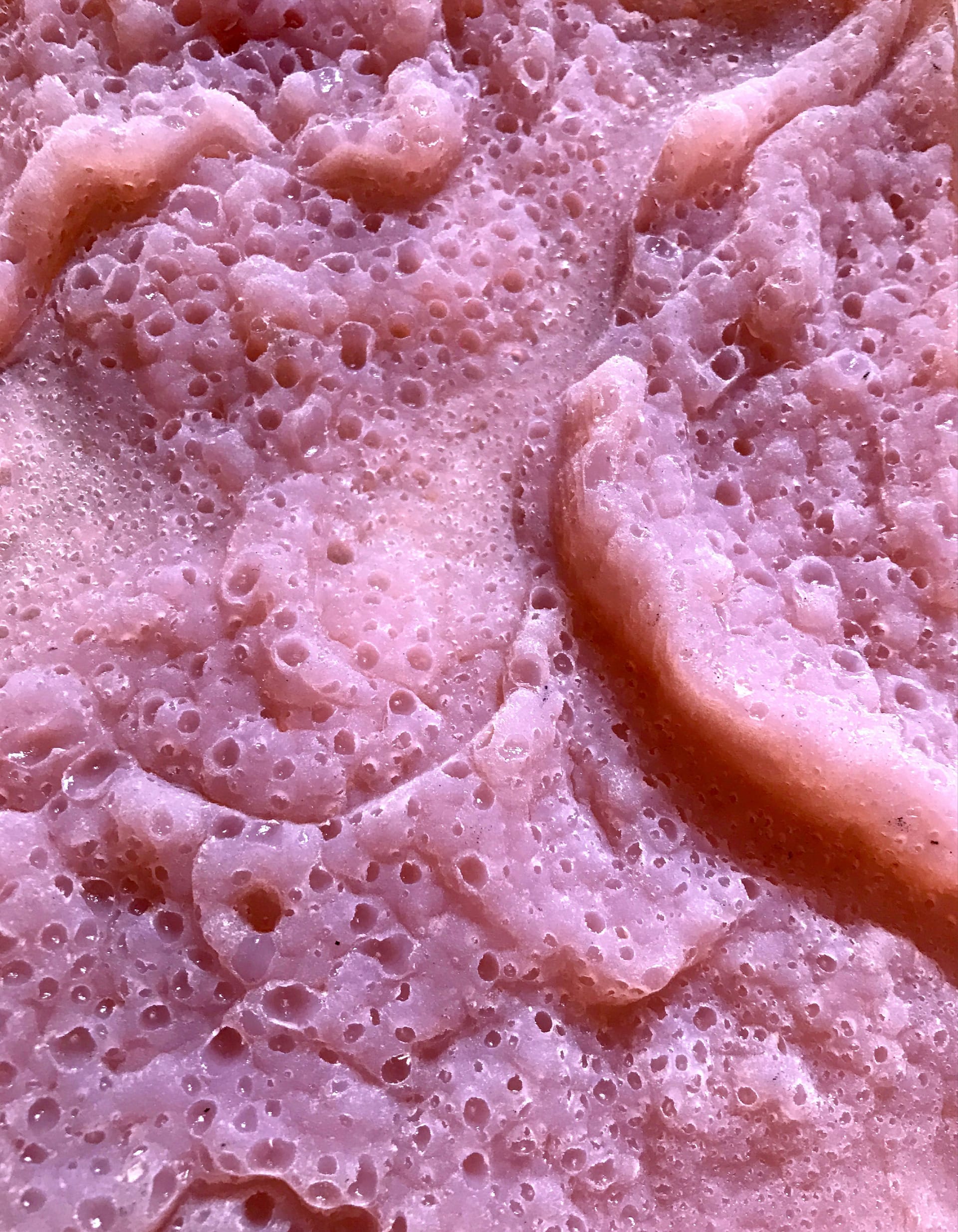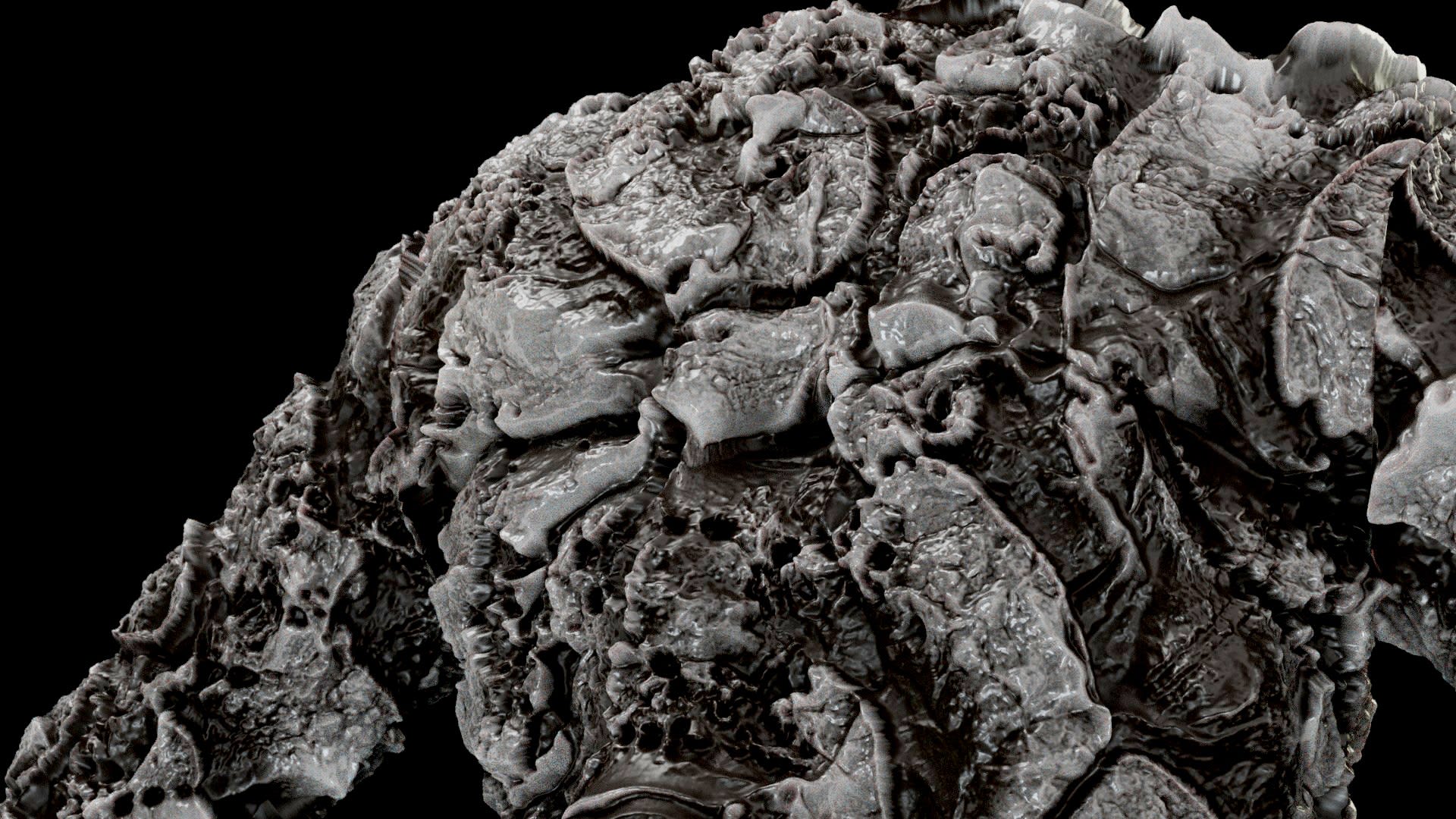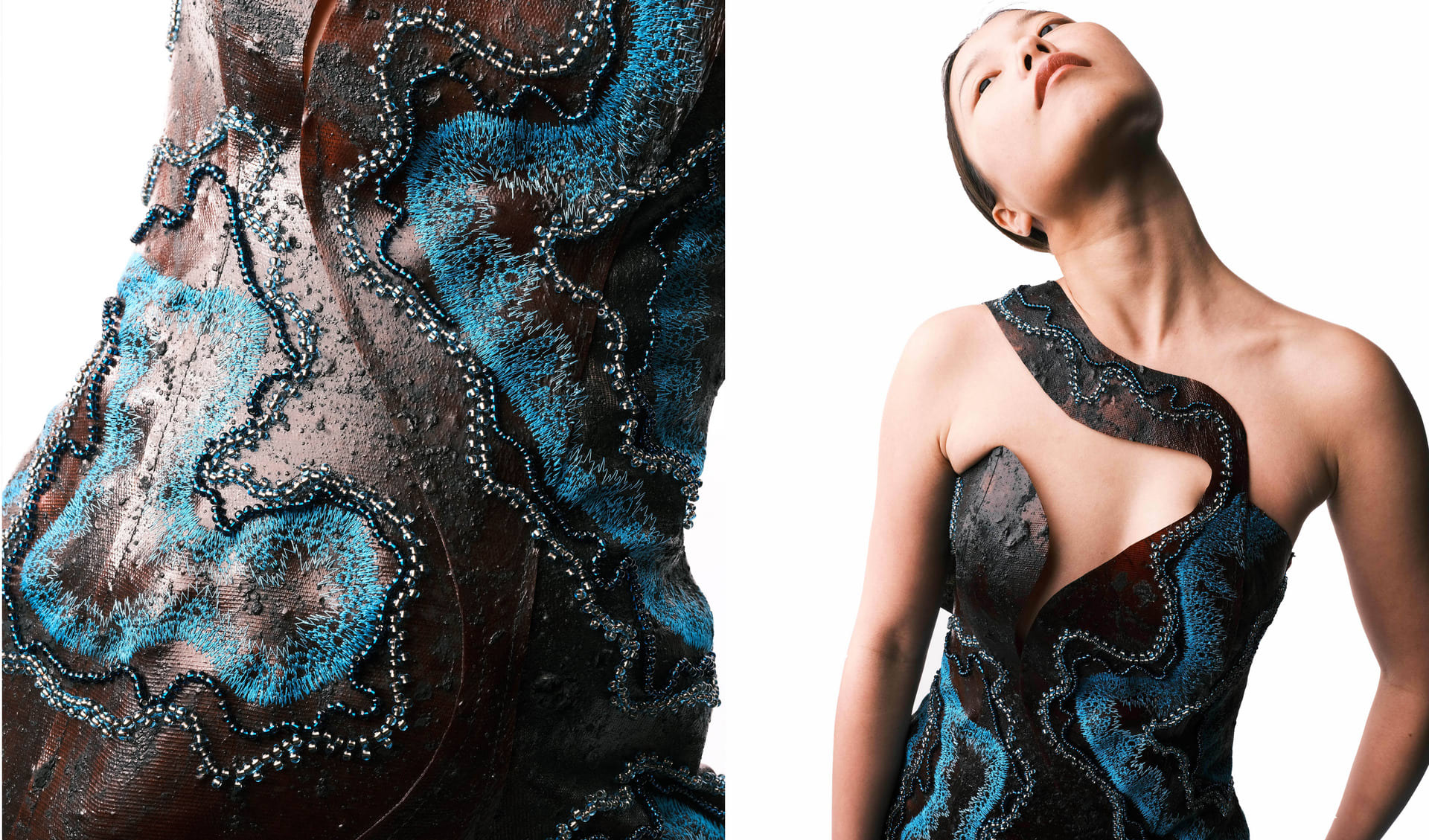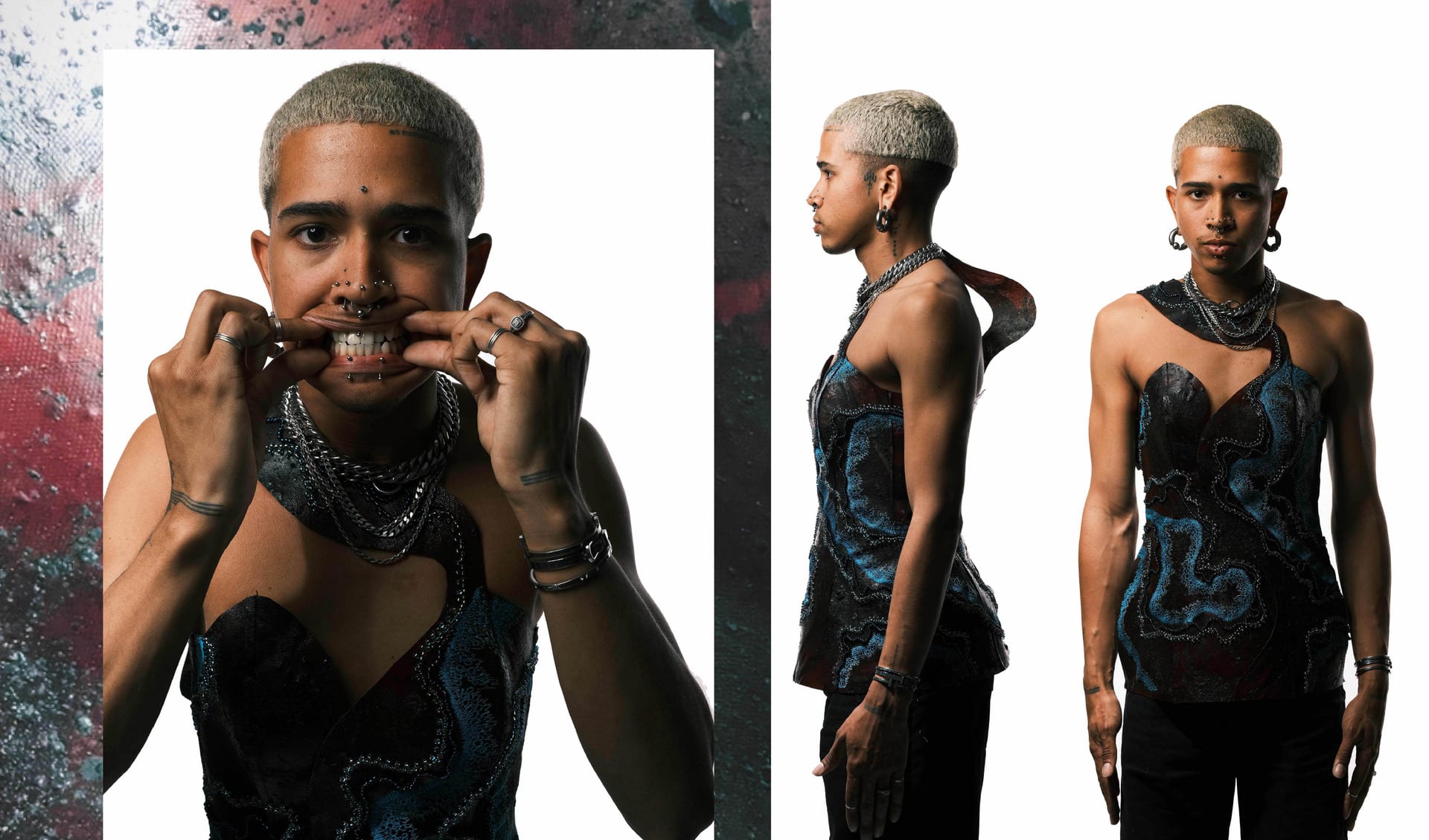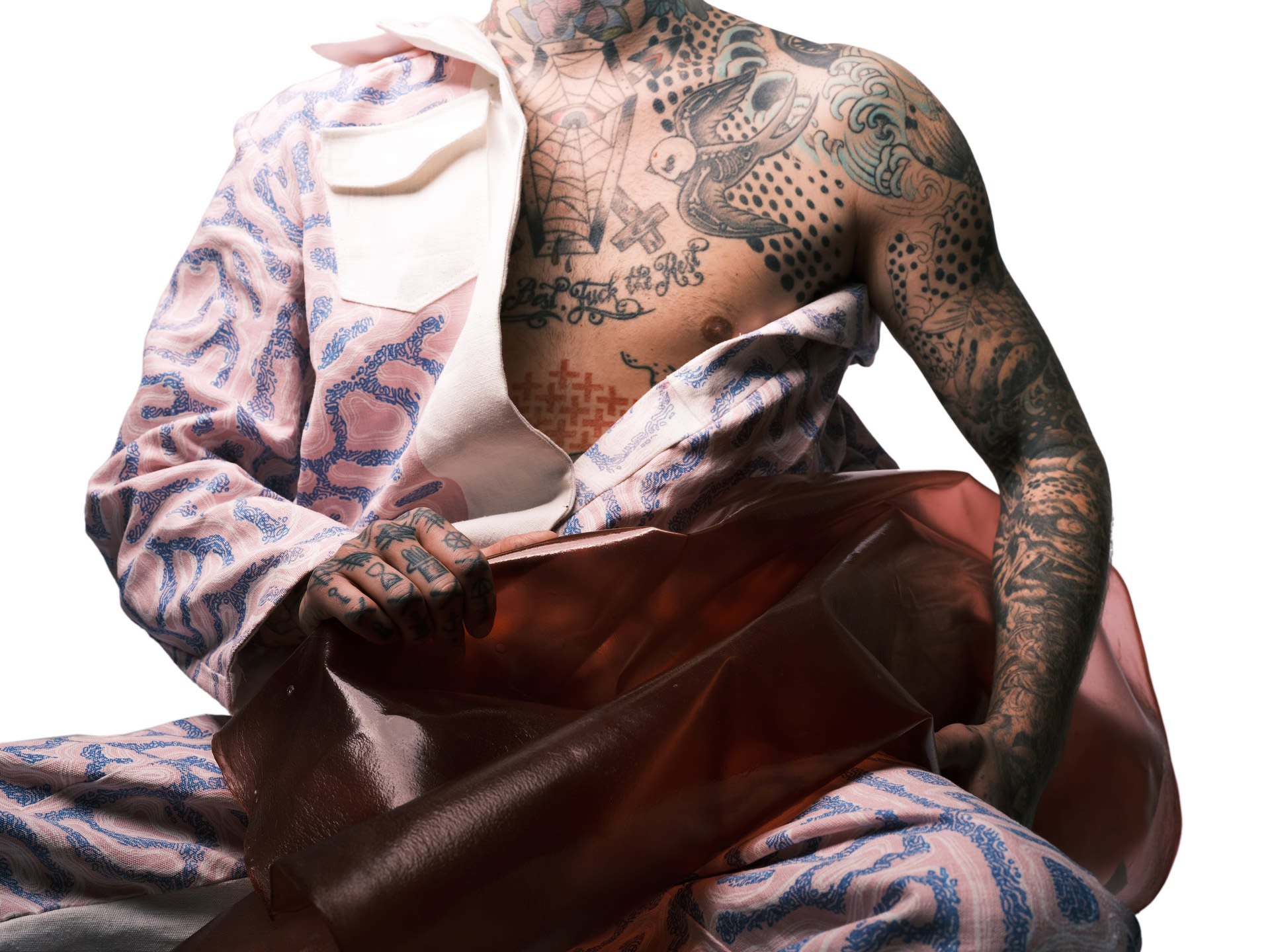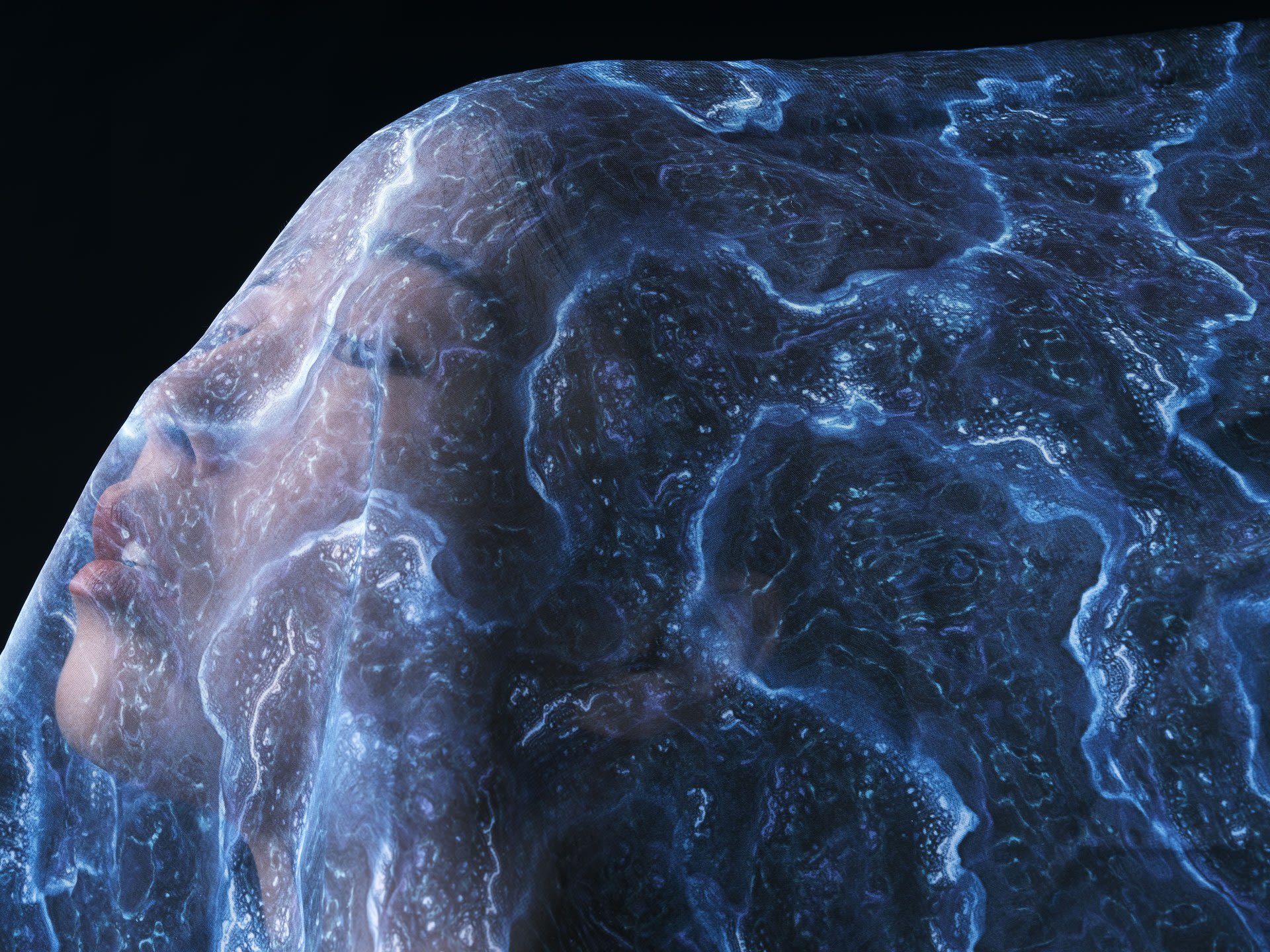Bea Brücker's work ask how the integration of biodesign practices and new fabrication technologies could be used as a tool for an economically and socially liberating design practice.
After graduating with a biodesigned collection from Hamburg University of Applied Sciences in 2018 she was part of the Youth Fashion Summit in Copenhagen, a two-year sustainability programme launched by the UN Global Compact, the Copenhagen Fashion Summit and the Global Fashion Agenda. This motivated her to reflect on her own practice and to continue the intensive research of circular fashion systems. Her work has been shown at multiple exhibitions and shows, including the Berlin Fashion Week. While studying at the RCA Bea has interrogated the existing eco-dogma prevalent in the discussion around bio-design conversation in Fashion.
FASHIONCLASH Festival // October 2021, Maastricht
ICADE 2021, Tsinghua International Conference On Art & Design Education// October 2021, Online exhibition, Beijing
Westfield London's Future Fashion competition, winner of category 'textiles' // Aug 2021, exhibition, London
WESLDET Exhibition Award- WES Lunn Design Education Trust // Jul 2021 London
BERLIN FASHION WEEK / Neo.Fashion // Jan 2019, Berlin
‘Green Cycles- Corporate Social Responsibility im Textilen Kreislauf ‘// Speaker with Hilke Scholz, HAW Hamburg// Sept 2018 Hamburg
WHAT IF?- Kollektiv Island Hamburg // Aug 2018, Hamburg
CALIFORNIA STATE UNIVERSITY, exchange semester // DAAD PROMOS scholarship, 2016/2017 Long Beach, California
Nacht des Wissens, exhibition‚ Manufacturing technology of textile art techniques// Jul 2015 Hamburg


